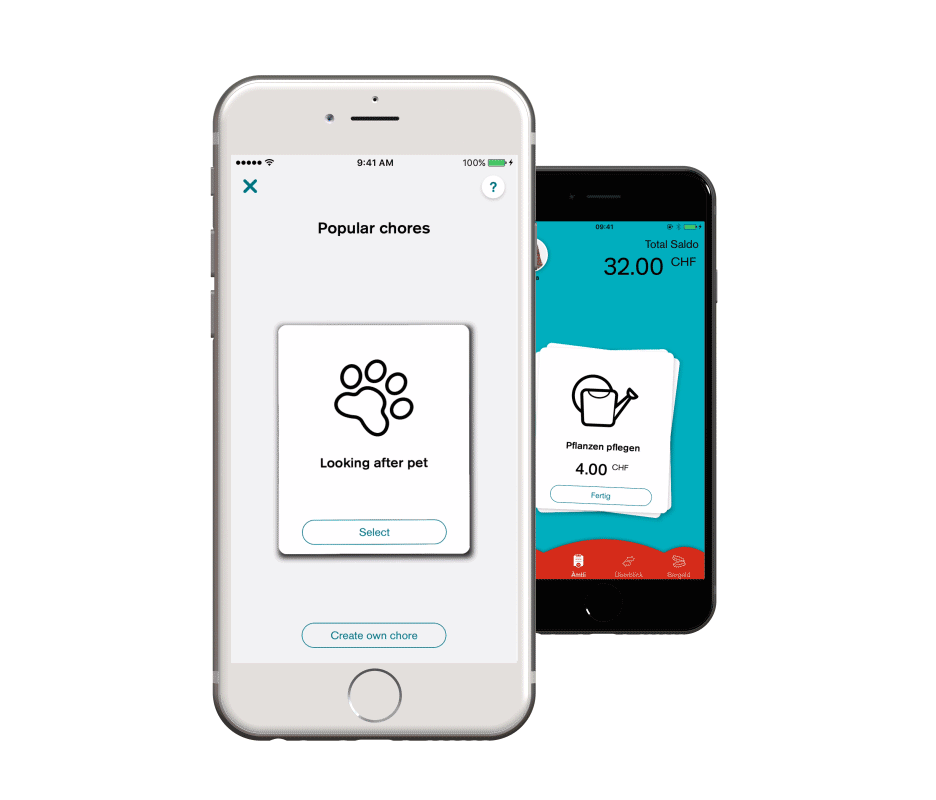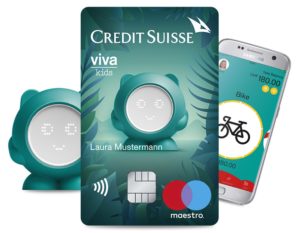The iconic piggy bank is getting a digital makeover with now several smartphone apps on the market designed specifically for children to teach them about savings, spending and responsibility.
Most money apps for kids act like virtual banks and offer lessons on how to budget and sock away money for spending goals. They tend to emphasize child-parent interaction and often have a common feature that tracks chores the child needs to accomplish before receiving an allowance from parents.

Digipigi app, Credit Suisse
According to Credit Suisse, financial literacy and financial education of children is a real concern for parents in Switzerland. A recent study shows that 90% of parents in the wealthy Alpine nation want their children to learn how to handle money.
The study, conducted by the amPuls market research firm on behalf of Credit Suisse, also found that most children in Switzerland not only receive pocket money but “are frugal with it.”
In response to the demand, the bank launched earlier this year a banking package for children below 12 years of age designed to guide them in their “first steps towards financial responsibility – from pocket money to their own Maestro card.”
The package, called Viva Kids, comes with a Digipigi money box, the Digipigi apps, on Private and one Savings account with account management and a Maestro card (from the age of seven and if their parents provide their consent).

Viva Kids banking package, Credit Suisse
The piggy bank has built-in apps which allow children to set savings goals, check their balance and make payments. The accompanying Kids app and separate Parents app give the child and the parents control over all balance transactions. This ensures that the child is always guided by the parents.
Florence Schnydrig Moser, the head of product management and investment services at Credit Suisse, was in charge of creating Viva Kids with her team.
“It soon became clear that what we wanted to do was bring the old-fashioned money box into the digital age – after all, kids must learn to use digital tools at a very early age now to keep up with the world,” she explained. “We also designed Viva Kids as a way for parents to help their children from the very start, and throughout their lives, with all of the financial needs they will face.”
Another digital piggy bank is Ernit, the brainchild of a team of creative technologists based in Denmark.
Ernit consists of a connected, physical piggy bank and an app. It aims to teach kids to give, save, and spend money wisely, even if that money is all virtual.
As money becomes an increasingly abstract concept, Ernit co-founder Søren Nielsen says it is important for kids to feel like they can experience money physically, through sight, sound, and even touch.
And so, the Ernit piggy bank has been designed to be a sensory experience. When money is deposited in the piggy bank, it lights up and makes a sound. Through the app parents, grandparents and other family members can transfer money directly into the kid’s Ernit piggy bank, which then notifies the child through light and sound.
In the app, kids can set multiple goals at once. This way they will have to decide where to put the latest contribution each time Ernit lights up.

Ernit piggy bank
Viva Kids and Ernit joins the growing list of financial and banking products targeted at young kids.
Bankaroo, for instance, was developed in 2011 to help children track their savings and what their parents owe them for chores. Designed for kids ages five to 14, the free app features tools for learning how to budget, save, set goals and do basic accounting.
Bankaroo claims it is used in more than 2,000 schools and has 100,000+ members from over 100 countries.
iAllowance is another app that tracks allowance for parents and their kids. Parents can push alerts to children to get chores done, and set up automatic allowance payouts and rewards when kids meet certain goals. They also can create an unlimited number of piggy banks for each of their kids.
The app costs US$3.99 and is only available on iOS.
Featured image: Child with glasses using a tablet by Ollyy via Shutterstock.com.
The post Digital Piggy Banks Teaching Kids to Save appeared first on Fintech Schweiz Digital Finance News - FintechNewsCH.
Comments